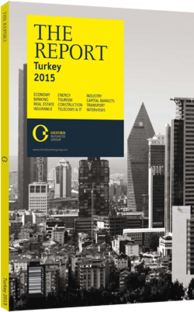Erdem Başçı, Governor, Central Bank of the Republic of Turkey (TCMB): Interview

Interview: Erdem Başçı
How will tapering of the US Federal Reserve’s quantitative easing programme affect Turkey’s economy? What is being done to prepare for this?
ERDEM BAŞÇI: The Fed’s signals on tapering quantitative easing since May 2013 have increased volatility in the global appetite for risk and caused capital to flow out of emerging economies. As of the first quarter of 2014, capital flows to emerging markets, particularly in portfolio investment, remain weak. Most emerging-market currencies fell against the dollar, especially in the early days after the Fed signalled its exit strategy. At first, depreciation in the Turkish lira was somewhat limited relative to currencies in similar emerging markets. However, due to the rise in domestic uncertainty towards the end of 2013, the lira fell further against the dollar, and Turkey’s risk relative to its economic peers increased. In response, the TCMB boosted its sales of foreign exchange reserves and implemented a direct currency intervention followed by a strong front-loaded monetary tightening in an interim meeting on January 28. Under current circumstances, tight monetary policy will not only contribute to price stability but will also support macroeconomic stability by reducing exchange rate uncertainty and risk perceptions. All told, the Turkish lira performed relatively well after the tightening delivered in January.
How prepared is the Turkish banking system for the possibility of future macroeconomic shocks?
BAŞÇI: As part of the economic programme adopted following the 2001 economic crisis, the Turkish banking system underwent major structural reform. This was a key factor that helped the Turkish economy recover from the global financial crisis of 2009 relatively quickly. Since then, the Turkish banking sector has maintained a sound structure in terms of asset quality and capital adequacy. The share of nonperforming out of the total is actually relatively low, at about 2.9%. The sector’s capital adequacy ratio, at approximately 15%, is well above both the legal minimum of 8% and the regulator’s minimum of 12%. The ratio of equity to total assets, i.e. the leverage ratio, is well above the 3% minimum set by the Basel III regulations and is on a stable course.
Stress tests also confirm that the system has strong capital buffers that would contain the effects of possible adverse shocks to exchange rates, asset prices, interest rates and non-performing loans. Though the sector’s foreign liabilities have increased considerably in the post-crisis period, banks do not have difficulty maintaining external funding, even in times of tightened global liquidity, as shown by the sector’s relatively high roll-over ratios.
What is the outlook for inflation and how is the TCMB preparing to help stabilise prices?
BAŞÇI: As of March 2014, consumer price inflation stands at 8.4% year-on-year and is expected to remain high due to the unfavourable course of food prices and the lagged effects of the recent currency depreciation. The TCMB, expecting that the factors driving inflation will keep it considerably above the 5% target for a while, has opted for monetary tightening to prevent deterioration in inflation expectations and pricing behaviour. The combination of a tight monetary policy stance and weak portfolio flows have begun to be reflected in the growth rates for loans and private domestic demand. Data for the first quarter of 2014 indicate that there has been some deceleration in private domestic demand, which will support disinflation in the forthcoming period.
Meanwhile, the contribution of net exports to economic growth is expected to increase, as external demand for Turkish goods recovers. This, in turn, should bring about a significant improvement in the nation’s current account deficit in 2014. Thanks to the recent deceleration of consumer loans, disinflation will resume from June 2013 onwards. Inflation is expected to reach the 5% target by mid-2015.
You have reached the limit of premium articles you can view for free.
Choose from the options below to purchase print or digital editions of our Reports. You can also purchase a website subscription giving you unlimited access to all of our Reports online for 12 months.
If you have already purchased this Report or have a website subscription, please login to continue.

